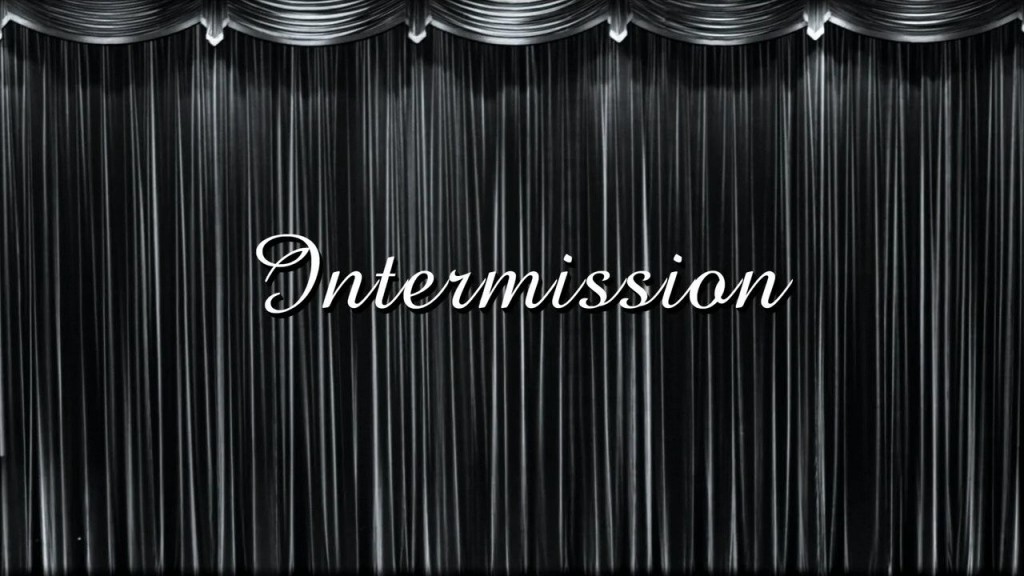I was watching Da Vinci Code in a multiplex in Bangalore. Langdon and Sophie are fleeing the French police who mistake them for killers and are speeding in a jeep through the jungle, towards the airport where a plane awaits them to whisk them to Zurich. At this point, abruptly I was yanked out of this world created by the filmmaker, when the lights came on and the locally-made title card ‘Interval’ flashed on the screen. The card also pointed out that the snack bar was open. This break was not intended by the filmmaker and had been brought on by the multiplex owner.
Interval or Intermission in a film is an Indian phenomenon and has now become a part of structure of a film. It is a legacy of the company drama. Early Tamil films were closely patterned after the prevailing entertainment form, the stage plays. The company dramas were long, lasting five to six hours and the artistes needed a break. There was also the need to change the settings, from palace to forest and so on. So a break, an interval, came in the middle. When films were made, this feature was imported into films also. Interval became a definitive part of film screenings in cinema houses. There was another reason for the interval; most of the cinema houses worked with a single projector in the first few decades. You needed time to change the reels and to let the projector cool. In time, a small commercial world grew out of this interval..chai, cigarettes, beedi, murukku, soda, along with song books came to be sold. This was also the time for slide advertisements and trailer of forthcoming films. The Tamil novel Nizhal Mutram/Current Show of Perumal Murugan captures the world of two youngsters selling snacks during the interval in a rural cinema house; they plead with the managerto extend the break by a few minutes.
But this artificial splitting of a film into two, affects its dramatic structure and therefore the aesthetics. It constitutes an interruption in the narrative. It also affects the narrative pattern; Screen play writers of Tamil cinema tend to provide for this break and fill up the first half with the traditional entertainment components such as songs, dance, comedy and so on before ending a first part of the film at a dramatic high point…and the actual denouement of the story is handled in the second half. The interval thus has a role to play in keeping our films at the entertainment level. The holistic cinema experience is broken.
To get the full impact of a film, it should be viewed without any interruption. In film festivals and when films are screened for juries, there is no break. I think the concept of having an interval spoils the entire cinematic experience. And leave alone the actual ‘Interval’, many song sequences in Tamil films, that are unconnected with the main narration, come as interruption, like little intervals. Maybe it’s fitting that Lalitha Gopalan, film scholar teaching at Texas, has titled her book on Indian cinema The Cinema of Interruptions!



The legacy of an interval today is seen in Bollywood films at a script level. There are so many times we find that scripts account for an interval themselves, and often build up to it. It almost creates a dual mini 3 act – one before and one after the intermission. Almost all Subhash Ghai films work like this 🙂
And you’re absolutely right, it induces an artificial narrative that was never intended when the original story was conceived. It’s a good argument for Indian filmmakers to seriously consider 90 minutes as a norm for films, but it is unlikely the system of commerce in place will let them break the mould right now.
Well, just a few points: 1. Interval existed in Hollywood as well till the late sixties. You can see that in any film of that period or before, e.g. My fair Lady. 2. Even today there is a concept of the mid point in screenwriting in the US (this is what the industry in the US calls it…or the middle of Act II. denouement always happens in the second half, interval or no interval. So the film is anyway divided. This is a misconception that only Indians divide films and structure it that way. Departures from classical structuring are present in all industries. 3. I dont thin interval brings down the film…on the contrary it enhances dramatic expectation and provides relief to the audience and breathing space before it is taken to the world of a second half of the film. festivals do not adhere to this for different reason which are never the same as what the audience wants or gets.
If the interval is structured into the narrative at the script level (as is done in many contemporary films – the interval in Johnny Gaddar comes to my mind) then I suppose there are no major issues. Sharad has rightly remarked that it provides ‘a breathing space’ for the audience – I believe that such an intended interruption allows the audience a chance to refresh themselves especially if the film is a typical commercial Indian cinema. However, I wouldn’t appreciate an interval in films by masters – an interval in say Andrey Rublyov or Tokyo Story or Pather Panchali would be a real horror!